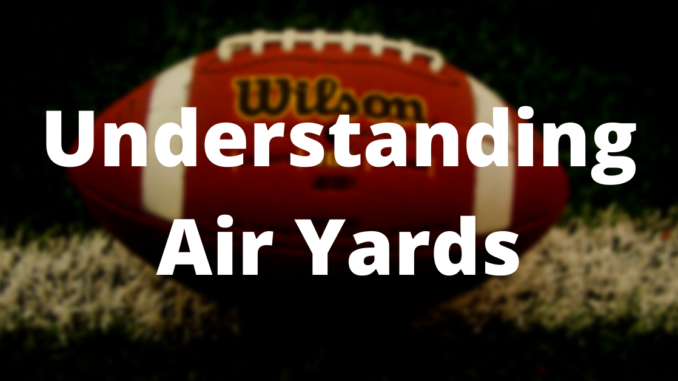
What are Air Yards
Air Yards are a measurement of how far the football travels from the line of scrimmage to the receiver. The result of the play (completion, incompletion) does not factor into the statistic.
You may also see Completed Air Yards and Incomplete Air Yards. These are most likely straightforward: Completed Air Yards measures the air yards associated with completed passes (total yards minus yards after catch) and Incomplete Air Yards measure the air yards associated with passes not caught.
Why are Air Yards important?
More casual fans most likely don’t know too much about air yards, but diehard fans and fantasy football players should. Air Yards can help you understand what is going on with a team’s passing game beyond just looking at the basic box score.
Air yards help you understand not only what percent of passes are going to a specific receiver (i.e, # of targets relative to total number of passes), but also how much of the deeper pass game that player is involved in.
Now, one could gain some of this information by looking at average depth of target (aDOT) but that does not capture the number of yards. In other words, a receiver could have a deep aDOT but on very few targets.
You can also compare a pass catcher’s air yards to their total yards to get a sense of whether their targets our low- or high-percentage catches. This observation would ignore drops (i.e., it treats any incompletion equally).
However, if you know the a player’s role in the offense has not changed year-to-year–or game-to-game during season–then you can make some judgments that a players air yards should remain relatively consistent. And then if their total yards are lagging their air yards (by an amount greater than expected), then you can anticipate their total yards to regress to the mean (note: sometimes people confuse regression to mean something bad, but it lay terms it really just means returning to the average).
More Information
Review the 2020 air yards leaders by total air yards and by team.

